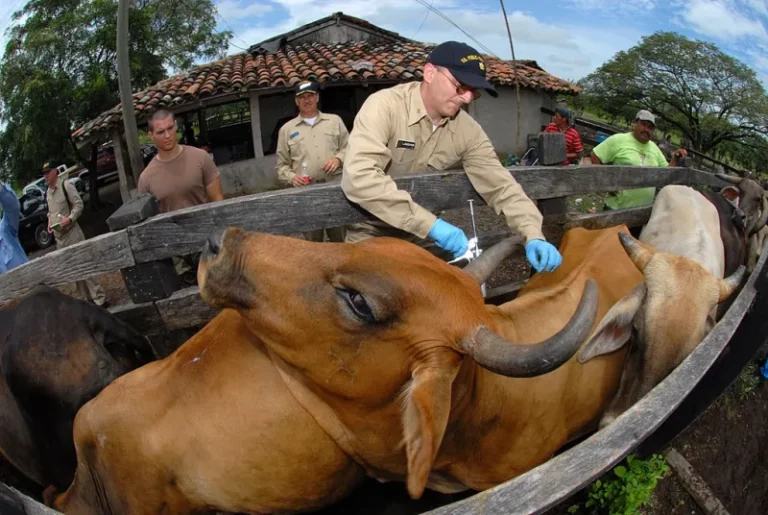How Much Could the Farmer Protests Cost Europe’s Economy?
Originally published on 2 Feb 2024
In order to put the current protests taking place across Europe into context, it is important to understand where it all started.
The history of the current protests can be traced back to the Green Deal (2019) which involved significant alterations to achieve climate neutrality. The purpose of the deal was to decarbonize and digitalize Europe’s economy. It suggested some serious alterations of policies with an objective to achieve climate neutrality by 2050.
However, the policymakers failed to include what is called second-order thinking, ie its impact on farmers. The ongoing turmoil has converged with a slowdown in all the major economies of Europe creating the foundations of a mega-crisis.
In many parts of Europe, the protests have escalated into roadblocks, reflecting the anger over the rising prices, low wages and the EU’s environmental regulations. The competition in the local food industry is further worsening the situation, leaving little hope for the farmers.
According to a CNBC report, the signs at the protest read: “When farmers are ruined, food has to be imported.” Another sign said: “No farmer, no food, no future.” The farmers in Germany are protesting against the government’s plan to cut diesel subsidies; the farmers in France are protesting against the excessive regulations in terms of their agricultural activities; the farmers in the Netherlands are protesting against the government’s environmental plans, aimed at reducing livestock population in order to cut down emissions.
Kids Who Consume Energy Drinks Are More Prone to Mental Health Disorders, Study Finds
Energy drinks could pose a risk to young brains, according to new research. Those who consumed energy drinks — which are intended to boost energy through the use of caffeine or other stimulants — were shown to have a higher risk of mental health issues, including attention-deficit hyperactivity disorder (ADHD), depression, anxiety and suicidal thoughts.
These findings stem from a review by Fuse, the Centre for Translational Research in Public Health at Teesside University and Newcastle University in the U.K.
In the review, published in the journal Public Health, researchers looked at data from 57 studies of over 1.2 million children and young people from more than 21 countries who consumed energy drinks.
Based on the findings, the researchers and other U.K. health organizations are calling for the government to ban sales of energy drinks to children under age 16.
You May Be Eating Predigested Food. Here’s Why
Why do many people overeat chips, cereals, cakes, puddings and other ultra-processed foods despite knowing those foods may not be healthy? According to emerging science, it may be due to manufacturing processes that “predigest” raw food ingredients — creating ultra-processed foods that bypass the body’s signals of fullness. You read that right: We are eating predigested food.
What does “predigested” mean? To manufacture cheap, delicious food that is packaged for convenience, basic food crops such as corn, wheat and potatoes are dissembled into their molecular parts — starchy flours, protein isolates, fats and oils — or what manufacturers call “slurries.”
Next, with the help of artificial colorings, flavorings and glue-like emulsifiers, those slurries are then heated, pounded, shaped or extruded into any food a manufacturer can dream up.
Add in just the right ratio of sugar, salt and fat designed to tickle our taste buds, and an ultra-processed food that’s nearly irresistible is born, said infectious disease specialist Dr. Chris van Tulleken, an associate professor at University College London.
Wisconsin Judge Affirms Regulators Can Force Factory Farms to Get Preemptive Pollution Permits
A Wisconsin judge ruled Tuesday that state regulators can force factory farms to obtain permits before they discharge pollutants, ensuring protections continue to apply preemptively for lakes, streams and drinking water.
Calumet County Circuit Judge Carey Reed issued the decision from the bench in a lawsuit brought by factory farm lobbyists, finding the state Department of Natural Resources has clear legal authority to protect the state’s waters.
“This ruling is critical because it preserves the DNR’s ability to address water pollution that can be caused by these facilities, at a time when many surface and groundwaters around the state are contaminated with animal waste,” said Evan Feinauer, an attorney with environmental advocacy group Clean Wisconsin. “Allowing large dairies to sidestep oversight would have been catastrophic for water protection in our state.”
The farming industry and environmentalists have been locked in a fierce back-and-forth over regulating factory farms, defined as farms with at least 1,000 beef cattle, 715 dairy cows or 200,000 chickens. According to the state Department of Natural Resources, more than 330 such farms are currently permitted to operate in Wisconsin.
A California Town Will Vote on Banning Factory Farms. What Does That Mean for the Rest of the U.S.?
This year voters in Berkeley, California, will get to choose whether to ban factory farms in its city limits — marking the first time in the U.S. that such a measure has been put on the ballot.
It may seem like an unusual mandate for a city that presently has no factory farms. (There’s a horse race track field that would be shut down if the measure passes.) But the activists behind the ballot initiative say it’s part of a broader strategy to ban this type of industrial style of livestock production in which cattle, chickens and pigs are held in confined spaces before slaughter.
If successful in Berkeley, a liberal San Francisco Bay Area town that’s often been at the forefront of US environmental policy, the method can be replicated elsewhere, they say.
“We can pave the path to abolishing factory farming,” said Cassie King, an organizer with Direct Action Everywhere, one of the groups that pushed for the measure.
Ninety percent of livestock in the U.S. are raised in factory farms, also known as concentrated animal feeding operations (CAFOs). This type of industrialized agriculture has long been the target of animal welfare and environmental advocates, who point to their cruel treatment of livestock, as well as their threat to public health through contamination of air and waterways.
Investment Is Flowing to U.S. Grass-Fed Beef Again. Will It Scale Up?
When two small Western grass-fed beef brands combined forces in the name of growth in fall 2022, Jeff “Trip” Tripician was tapped to lead the newly formed company, Grass Fed Foods. As CEO, one of his first actions was to send an employee on a quest: Find the “most regenerative” ranch, he instructed. “But they have to be big. Do not bring me a small ranch,” he said.
That’s how, a year later, he ended up at the largest cattle ranch in Montana, where the only thing more vast than its approximately 380,000 acres is the wealth and power of the man who owns it: one Rupert Murdoch.
While health, environmental, and animal welfare concerns have contributed to an increase in demand for grass-fed over feedlot beef over the past decade, the last reliable data estimated it accounted for 4% of the commercial market in 2016 — and nearly all of it is imported from Australia, New Zealand, and other foreign countries, where grass-fed production costs less. (Experts say those numbers have likely increased somewhat, but good data is hard to find.)
Meanwhile, grass-fed beef from U.S. cattle is primarily sold regionally at farmers’ markets, through meat shares, and in restaurants. And despite an abundance of optimism in recent years, countless efforts to shift more domestic production toward grass-fed have failed.
Pay Close Attention to What Science Says About Glyphosate
Six years ago, Hawaii became the first state in the U.S. to ban the toxic insecticide chlorpyrifos from use in agriculture. The rest of the U.S. and the European Union followed.
Last month, the American Academy of Pediatrics released a Clinical Report discussing the potential danger of the herbicide glyphosate in our food supply. Glyphosate is the active ingredient in Roundup-like herbicides. On Jan. 18, Gov. Josh Green announced significant progress in transferring state leases for pastoral and agricultural lands to the Hawaii Department of Agriculture. This is part of his administration’s vital mission of increasing local food production.
As we move towards the governor’s goal of increased food production for the state, we should pay close attention to what the science says about glyphosate.
Roundup-like herbicides are now the most heavily sprayed herbicides in history. The AAP reported that there is increasing evidence of a connection between cancer and glyphosate-based herbicides, as well as evidence of endocrine dysfunction.
Ultra-Processed Foods: Increased Risk of Cancer
Recent scientific research shows that eating ultra-processed foods raises cancer risk, especially for colorectal, ovarian, breast, and brain cancers. Consuming beverages that contain artificial sweeteners or added sugar, or animal-based ultra-processed foods, are particularly strongly associated with developing cancer.
A large-scale prospective cohort study based in Europe examined the data of more than 500,000 people to examine the link between ultra-processed foods and cancer. After adjusting for several factors, including sex, smoking, education, physical activity, height, and diabetes, the results, published in 2023 in the Lancet, showed that “a substitution of 10% of processed foods with an equal amount of minimally processed foods was associated with reduced risk of overall cancer, head and neck cancers, esophageal squamous cell carcinoma, colon cancer, rectal cancer, hepatocellular carcinoma, and postmenopausal breast cancer.”
The researchers concluded that “this study suggests that the replacement of processed and ultra-processed foods and drinks with an equal amount of minimally processed foods might reduce the risk of various cancer types.”
Yes, It Is Cricket: Italy Gives Go-Ahead to Insect Flour for Human Use
A company that produces flour made from crickets has become the first in Italy to be given the green light to sell food made from insects for human consumption, defying Italian food purists and even a government attempt to curb its use.
Josè Francesco Cianni, the chief executive of Nutrinsect, said: “A new page in the history of food has been opened” now that his nutrient-packed flour can be incorporated into an array of food items.
Since 2020, millions of crickets have been raised at the company’s plant in Montecassiano, a town in the central Marche region, where they are heat-treated before being frozen and ground into powder.
The EU approved the sale of insects — namely crickets, locusts and darkling beetle larvae — for human consumption in early 2023, sparking a flurry of proposed regulations from the Italian government, including one aimed at ensuring insects are kept away from traditional dishes such as pasta and pizza. “It’s fundamental that these flours are not confused with food made in Italy,” said the agriculture minister Francesco Lollobrigida at the time.
Suggest a correction







